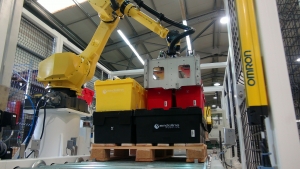2020 must be the year for robotic automation within UK manufacturing
UK manufacturers must tip the balance in favour of automation in 2020 to avoid falling behind international competition.
As the only G7 country with a robot density below the world’s average, with just 74 units per 10,000 workers, the UK is behind 14 other European countries in robotic adoption, highlighting the challenge that British manufacturing faces to compete with foreign productivity.
The UK led the First Industrial Revolution by embracing new technologies and the opportunities these created. However, unless British manufacturers significantly increases its adoption robotics and automation, and take full advantage of the technology available, foreign productivity will increase and the UK will be left trailing behind in the Fourth Industrial Revolution.
Last year, Endoline Automation, capitalising on its four decades of success in automating global food manufacturing facilities, launched Endoline Robotics in a bid to not only meet rising demand but to educate UK manufacturers on the many benefits robotic integration can yield.
At the end of last year, Endoline Robotics’ strategic partner, FANUC UK, held an Open House as a way of bringing key industry figures together and open a discussion on what needs to be done to move UK automation uptake forward.
While raising a number of interesting questions on the state of automation, the event highlighted the major challenges which still need to be overcome, and, in particular, the misconceptions which still surround robotics.
While most UK manufacturers understand the efficiencies gained from automation, the belief that it is expensive is still a barrier, particularly for SME’s and manufacturers on short term retailer contracts. However, when you consider that, as a country, we are around 30% less productive per hour than a German manufacturer, then the financial impact of not automating is clearly far greater.
Today, robotic systems can not only boost productivity and efficiency, they are tangible assets which can be moved or easily re-programmed to meet changing demands. Robotic palletising systems in particular, as they are outside high-care areas, are extremely flexible and can take the strain of monotonous and repetitive tasks off human workers, freeing up their time to complete more value-added tasks.
For many, return on investment (ROI) can be a deal breaker. When looking to achieve ROI inside a year, manufacturers shouldn’t be swayed by price alone. A well-engineered solution will provide low cost of ownership for many years at a fraction of the cost of manual labour.
Therefore the risk we face is not robots taking over the UK workplace, but the risk that, unless UK manufacturers begin embracing the benefits of automation, other countries will continue to seize the initiative and take advantage of new technologies, not least the growth and jobs they bring, while the Britain continues to trail behind.



